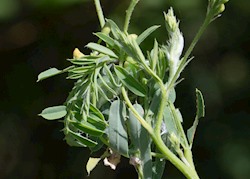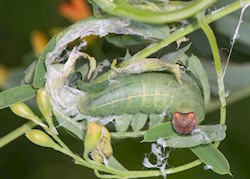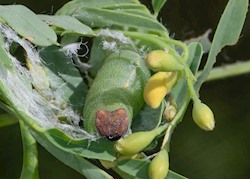Zarucco Duskywing Erynnis zarucco
Butterfly: Wingspan: 1 - 1¾ inches (2.8 - 4.4 cm). UPPER SURFACE (dorsal) Dark brown. Small cluster of tiny white spots near forewing tip; distinctive pale brown/tan patch beside spot cluster. Hindwing sparsely dotted. Brown or buffy fringe. Female lighter and more heavily patterned. UNDER SURFACE (ventral) Forewing mirrors upper surface. Hindwing very dark with some spotting.
Egg: Creamy white when laid; turns pale orange. A sphere with numerous longitudinal ridges. Laid on or near new growth.
Caterpillar: Light green with pale lateral stripe. Body covered with numerous minute white dots. Head brown and rimmed on either side with three yellow-orange spots. Collar indistinct. First three pairs of legs (thoracic) are pale. Mature caterpillars overwinter.
Chrysalis: Green to brownish with a single small dark dot on either side of head portion. Together, the dots appear to be eyes.












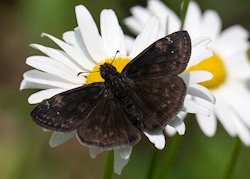


_Charny.jpg)
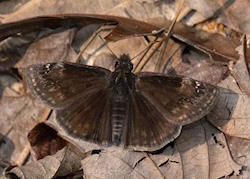
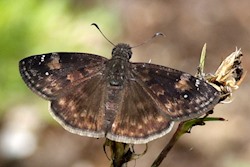
_Charny.jpg)
_Charny.jpg)




_Charny.jpg)

















